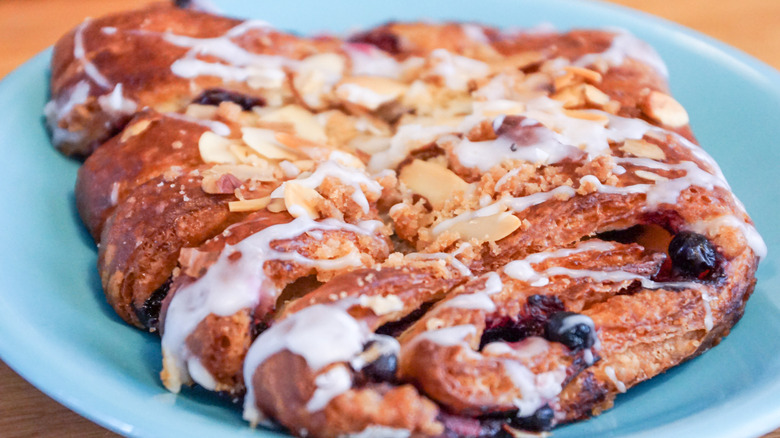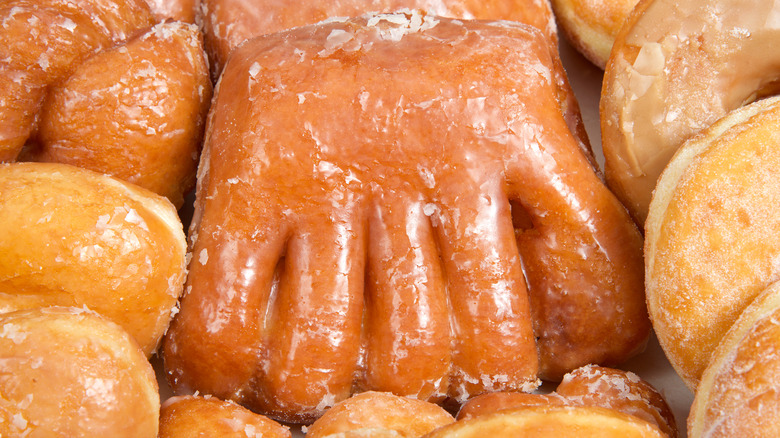Is A Bear Claw A Donut?
The question of whether a bear claw is a donut is not like a paradoxical question posed in an episode of "The Simpsons" ("What's the sound of one hand clapping?"), but the answer is both yes and no. To get to the bottom of this mystery, we should consider the bear claw itself. What is it, exactly?
In the spring of 1914, Geibel German Bakery in Sacramento, California ran an ad in the city's local newspaper, The Sacramento Bee. In the advertisement, the bakery offered square cheesecakes, whipped cream puffs, Parker House rolls and, for the first time, bear claws, at two for 5¢. While it's not absolutely certain that these were the first bear claws, Sacramento has long made this claim to fame. The bakery's bear claws were made from a yeasted, flaky dough similar to a Danish, and filled with almond paste and sometimes raisins. They were shaped into a half moon, with a series of cuts around the curved side which rise and separate while baking, hence the paw or claw-like appearance.
When bear claws are donuts
The baked, Danish-like bear claws are made from milk, yeast, flour, sugar, butter or shortening, and egg. The dough is like pie crust in the sense that you want a delicate, buttery, layered result. Donuts, on the other hand, are leavened dough, some are yeasted while others are not, often rolled out and cut into a circle with a hole in the middle. Instead of baking in an oven, donuts are dropped into hot oil and deep fried.
Sacramento's "original" bear claw, and ones made like it today, are definitely not donuts, but, sometimes you'll find a bear claw that fits the bill. If you go into a donut shop and see a bear claw that looks like a donut, i.e. fried until poofy and glazed, then it's a donut. Sometimes though, they're filled, with a drizzle of icing and sprinkled with sliced almonds, but if they're fried, they're still a donut. If you've tried both and prefer the Danish-style bear claw, it might behoove you to visit a bakery and skip the donut shop altogether.

